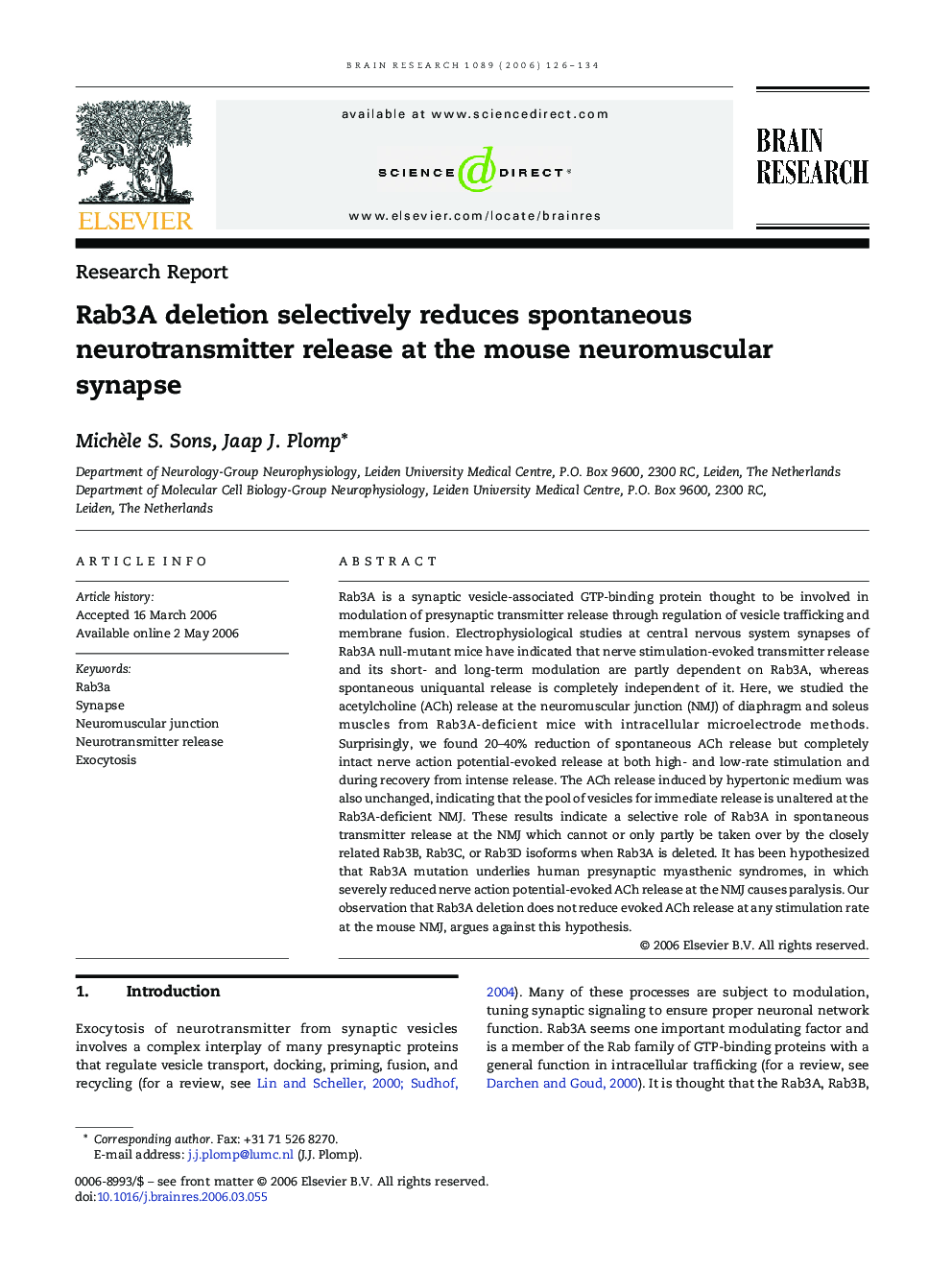| Article ID | Journal | Published Year | Pages | File Type |
|---|---|---|---|---|
| 4332962 | Brain Research | 2006 | 9 Pages |
Rab3A is a synaptic vesicle-associated GTP-binding protein thought to be involved in modulation of presynaptic transmitter release through regulation of vesicle trafficking and membrane fusion. Electrophysiological studies at central nervous system synapses of Rab3A null-mutant mice have indicated that nerve stimulation-evoked transmitter release and its short- and long-term modulation are partly dependent on Rab3A, whereas spontaneous uniquantal release is completely independent of it. Here, we studied the acetylcholine (ACh) release at the neuromuscular junction (NMJ) of diaphragm and soleus muscles from Rab3A-deficient mice with intracellular microelectrode methods. Surprisingly, we found 20–40% reduction of spontaneous ACh release but completely intact nerve action potential-evoked release at both high- and low-rate stimulation and during recovery from intense release. The ACh release induced by hypertonic medium was also unchanged, indicating that the pool of vesicles for immediate release is unaltered at the Rab3A-deficient NMJ. These results indicate a selective role of Rab3A in spontaneous transmitter release at the NMJ which cannot or only partly be taken over by the closely related Rab3B, Rab3C, or Rab3D isoforms when Rab3A is deleted. It has been hypothesized that Rab3A mutation underlies human presynaptic myasthenic syndromes, in which severely reduced nerve action potential-evoked ACh release at the NMJ causes paralysis. Our observation that Rab3A deletion does not reduce evoked ACh release at any stimulation rate at the mouse NMJ, argues against this hypothesis.
